What's so special about aspen?
“WHAT’S SO SPECIAL ABOUT ASPEN?” by Tasmin Fletcher, Project Assistant, March 2020
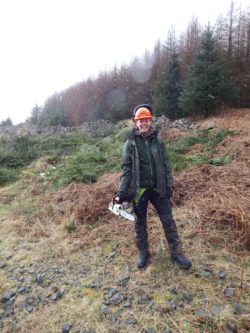
Hi folks, I’m Tasmin, one of the new Restoring Hardknott Forest Project Assistants. I started out as a volunteer last spring and in January this year was officially hired to work on the Project. In the last year I’ve been involved in sitka lopping, vegetation surveys, tree planting, school groups, chainsawing, volunteer days and more sitka lopping! Watch this space for more about me and how I came to be working in conservation.
Aspen? Sure!
One of the first jobs since starting work at Hardknott has been creating small exclosures to plant aspen near the River Duddon. Initially, I didn’t give the task much extra thought, but it gradually got me thinking about this species - why are we planting it at Hardknott? Why does it need special exclosures when other native trees are either regenerating naturally, or being planted with no protection? What benefits will it bring ecologically? In short, what’s so special about aspen?
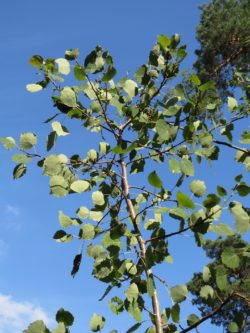
Aspen in the breeze (left) and distinctive diamond shaped marking on bark at Birks Bridge, Hardknott Forest (below) (Bark photo: Tasmin Fletcher, 2020)
The tree that trembles
I think aspen has only been on my radar as a native species for about 2 years. Growing up in North East England, it’s a tree I never became familiar with as I just never saw it. Therefore my first introduction to aspen came on a guided walk at a beautiful site near Ullapool called Corrieshalloch Gorge, (I later found out that the NW Highlands is where aspen is now most common in the UK).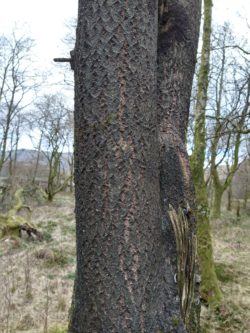
“The thing about aspen is that you hear it before you see it”, I was told.
It’s hard to describe how distinctive the rustling of aspen leaves is - aspen’s scientific name is Populus tremula, referring to the way its leaves tremble. There was something enigmatic about the dancing leaves that made quite an impression on me at the time, and the fact that the species is nationally rare added to the intrigue.
Canadian cousins
My second ‘aspen moment’ came last year, when Craig and I were travelling in British Columbia. Trees are something else in Canada, and aspen is no exception. These North American relatives (Populus tremuloides) of our native tree were everywhere and provided a good backdrop to some incredible wildlife! Surprisingly, aspen is the most common and widely distributed broadleaf tree in the world, found across large swathes of the Northern Hemisphere.
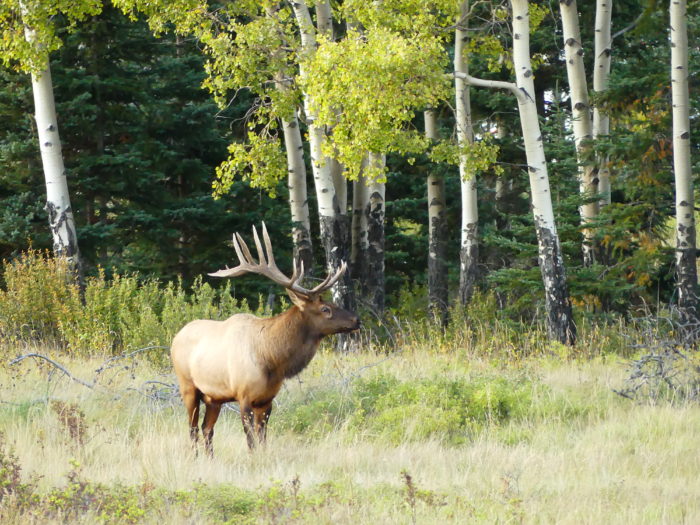
You won't find one of these at Hardknott! (Photo: Craig Holden, 2019)
Ecological importance
Aspen is a pioneer species, being one of the first species to colonise the British Isles following glaciation along with more familiar birch, willow and rowan. Consequently, it tolerates a wide range of conditions and grows up to 550m elevation, but generally prefers moist soils and open sunlight. Sounds like it should be right at home at Hardknott!
It can also be described as a keystone species as it is host to many woodland specialists, which have developed a long ecological association with the tree. Some species of plant and invertebrates rely exclusively on aspen, such as the aspen hoverfly. It is also the preferred food of the Eurasian beaver, and although it may be a little while yet until we see beavers at Hardknott, trials have now been given the go ahead in Cumbria. There are many sources of information on the ecological importance of aspen, see the Woodland Trust, Trees for Life or Eadha pages for a more detailed overview.
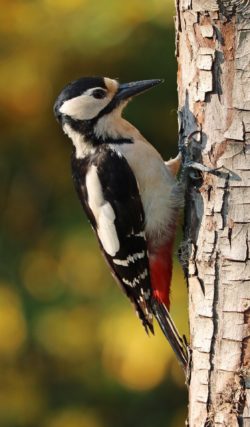
Aspen provides important habitat for woodpecker and other woodland specialists
Aspen is in fact already growing at Hardknott in the woods next to Birks Bridge car park, presumably planted by the Forestry Commission many years ago. Our Project Officer, John, likes to trick school groups by getting them to guess how many trees there are growing at the edge of the copse. 752? No! There’s actually only 1! Aspen is one of few native tree species that prefers to reproduce by suckering, that is, producing suckers or ‘ramets’ that are genetic clones of the parent tree and can surface up to 40m away from it. This makes it look like a ‘tide’ of mini-aspen is advancing into the field there...

Aspen suckers at Birks Bridge (Photo: Tasmin Fletcher)
Why do we not see much aspen then?
Aspen is not inherently rare. As previously mentioned, it has a very wide natural distribution and can thrive in a variety of environments, making its current scarcity in the UK seem puzzling. One of the main factors is its preference to reproduce by suckering, meaning that it is unable to disperse widely, and it actually only rarely produces seeds. On top of that, it is dioecious, meaning male and female flowers grow on different trees, and so cross pollination becomes more difficult as colonies become more fragmented. Crucially, aspen also seems to lack the ability to form veteran trees and rarely survives longer than 50-100 years, meaning that once a tree dies the local seed source is lost.
Human activity has also been influential in its current distribution. Land management practises that allow intense grazing by sheep and deer have suppressed the spread of aspen (which is known to be especially palatable to grazers). And despite its widespread use in other countries, aspen in the UK has not traditionally been cultivated for coppice or timber, unlike other native species such as hazel and oak. Therefore it now mostly clings on at the fringes of its range.

Deer think aspen is super tasty
Cumulatively, these factors mean aspen woodlands are fragmented and on the brink of being lost in certain locations. Fortunately there are a number of conservation efforts to bring back aspen for both forestry and biodiversity value. Trees for Life’s Aspen Project and the work of Eadha have already made a difference at a number of sites in Scotland. Here in Cumbria, the Lakeland Aspen Project is also aiming to preserve the genetic diversity of Cumbrian aspen and increase the distribution of the species. Bringing back demand for aspen timber is an important part of its conservation (the wood that pays, stays!). Among other things, it has the potential to be used for biomass, paper-making, and interestingly, due to its high cellulose content, for extracting nanocrystalline cellulose (NCC). This material has the potential to replace many non-organic plastics and metal electronic components in the future. Apparently aspen is also the timber of choice when making saunas…
Aspen at Hardknott
At Hardknott, we are lucky to be working with the Back On Our Maps (BOOM) Project at the University of Cumbria, who are reintroducing locally threatened or extinct species, such as aspen, in South Cumbria.
With support from our project partners Forestry England, we are constructing exclosures to plant in and establish a seed source for aspen by the river, in the hope that colonies will take a stronghold in the future. Some trees have been planted randomly without protection, in order to monitor the impact of browsing. We’ll see how that one goes!

Aspen no.1793 fending for itself (Photo: Tasmin Fletcher)
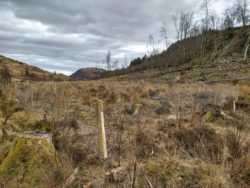
Temporary exclosures for aspen by the Duddon (Photo: Tasmin Fletcher)
The future
Given everything I’ve learned about aspen, I’m actually pretty excited to see it being re-established at Hardknott and I’m sure it will contribute to the increasing biodiversity of the site. Hopefully soon the leaves will be coming out on the aspens at Birks Bridge and rustling away in the breeze once more...
References:
Cosgrove, P. and Amphlett, A. eds. 2002 The Biodiversity and Management of Aspen Woodlands Cairngorms LBAP, Grantown-on-Spey. Available here.
Eadha Enterprises. 2016. Uses for Scottish Aspen Timber - A Summary Report by Eadha Enterprises [Online] Available here.
